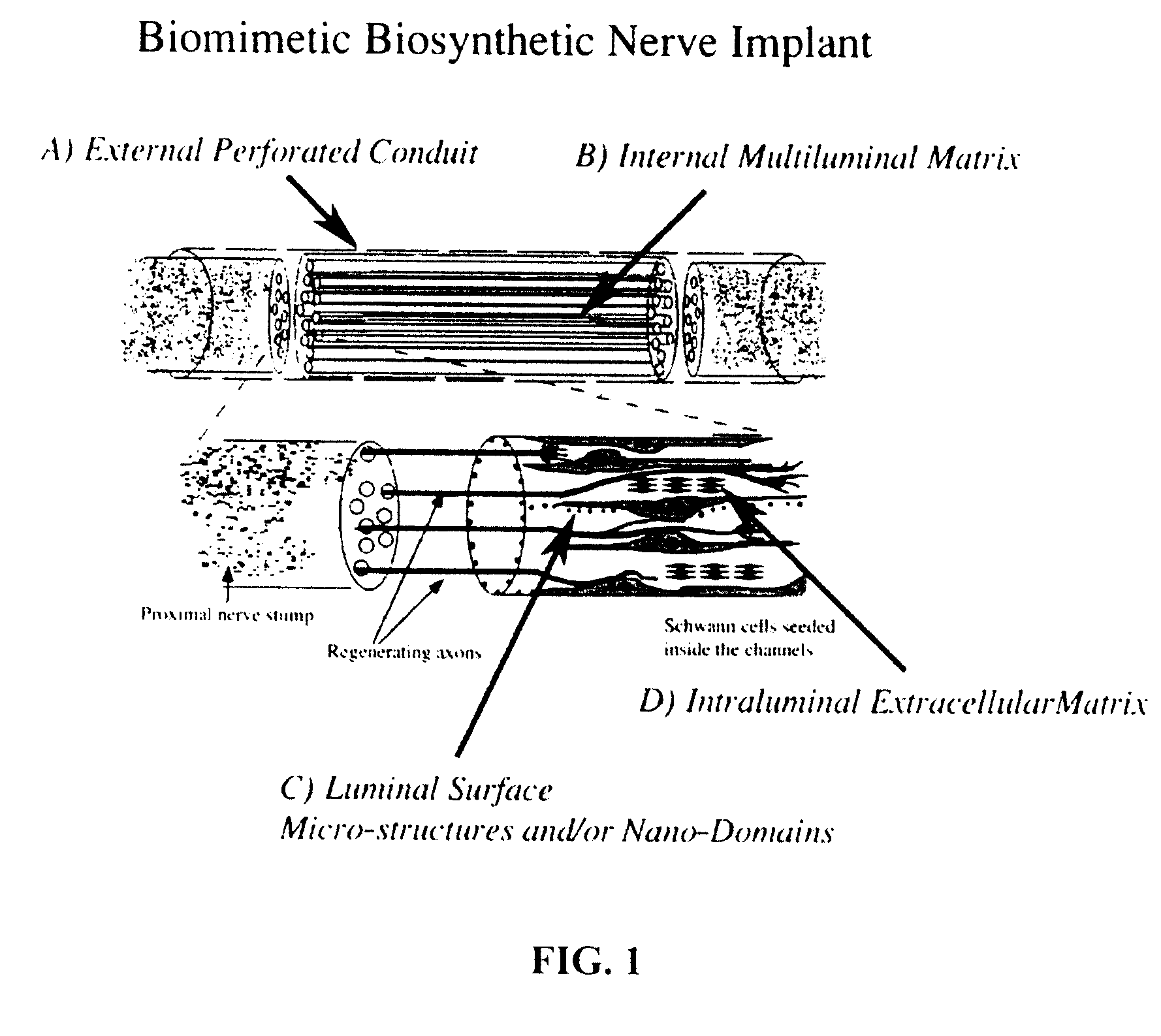A Biomimetic Synthetic Nerve Implant
a biosynthetic nerve and biomimetic technology, applied in the field of biomimetic biosynthetic nerve implants, can solve the problems of long-lasting functional deficits, irreversible injuries to the adult nervous system, and repair strategies that require tissue implantation for bridge repair have not yet matured into clinical practice, so as to improve tissue regeneration capacity, and improve the magnification of regenerated tissue
- Summary
- Abstract
- Description
- Claims
- Application Information
AI Technical Summary
Benefits of technology
Problems solved by technology
Method used
Image
Examples
example 1
[0046] Sciatic nerve repair
[0047] Preclinical data on animal models was obtained to evaluate surgical morbidity, immunogenicity, and cellularity of the implants. Using the sciatic nerve gap repair model, two separate cohorts of rats repaired with either seven or fourteen multi-luminal BNIs were examined and compared to animals repaired with empty tubes, tubes filled with collagen, or autologous grafts. Some of the animals were implanted with PTFE Micro-Renathane® tubing that included conical perforations.
[0048] As expected, the recovered implant showed a nerve cable 10 weeks after implantation (FIG. 4). The benefit of the perforations to the polyurethane Micro-Renathane® tubing is also illustrated in FIG. 4. In sharp contrast to the single nerve cable that characterizes the autograft (FIG. 4A) and the simple tubularization repair method (FIG. 4B), multiluminal repair revealed fascicular-like nerve growth throughout the length of the multiluminal BNIs 10-16 weeks after injury (FIG....
PUM
 Login to View More
Login to View More Abstract
Description
Claims
Application Information
 Login to View More
Login to View More - R&D
- Intellectual Property
- Life Sciences
- Materials
- Tech Scout
- Unparalleled Data Quality
- Higher Quality Content
- 60% Fewer Hallucinations
Browse by: Latest US Patents, China's latest patents, Technical Efficacy Thesaurus, Application Domain, Technology Topic, Popular Technical Reports.
© 2025 PatSnap. All rights reserved.Legal|Privacy policy|Modern Slavery Act Transparency Statement|Sitemap|About US| Contact US: help@patsnap.com



